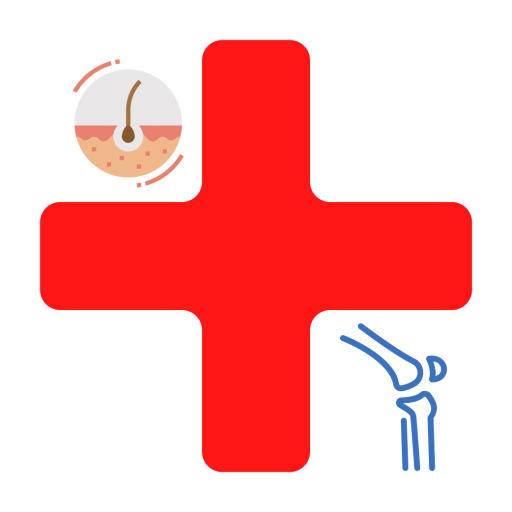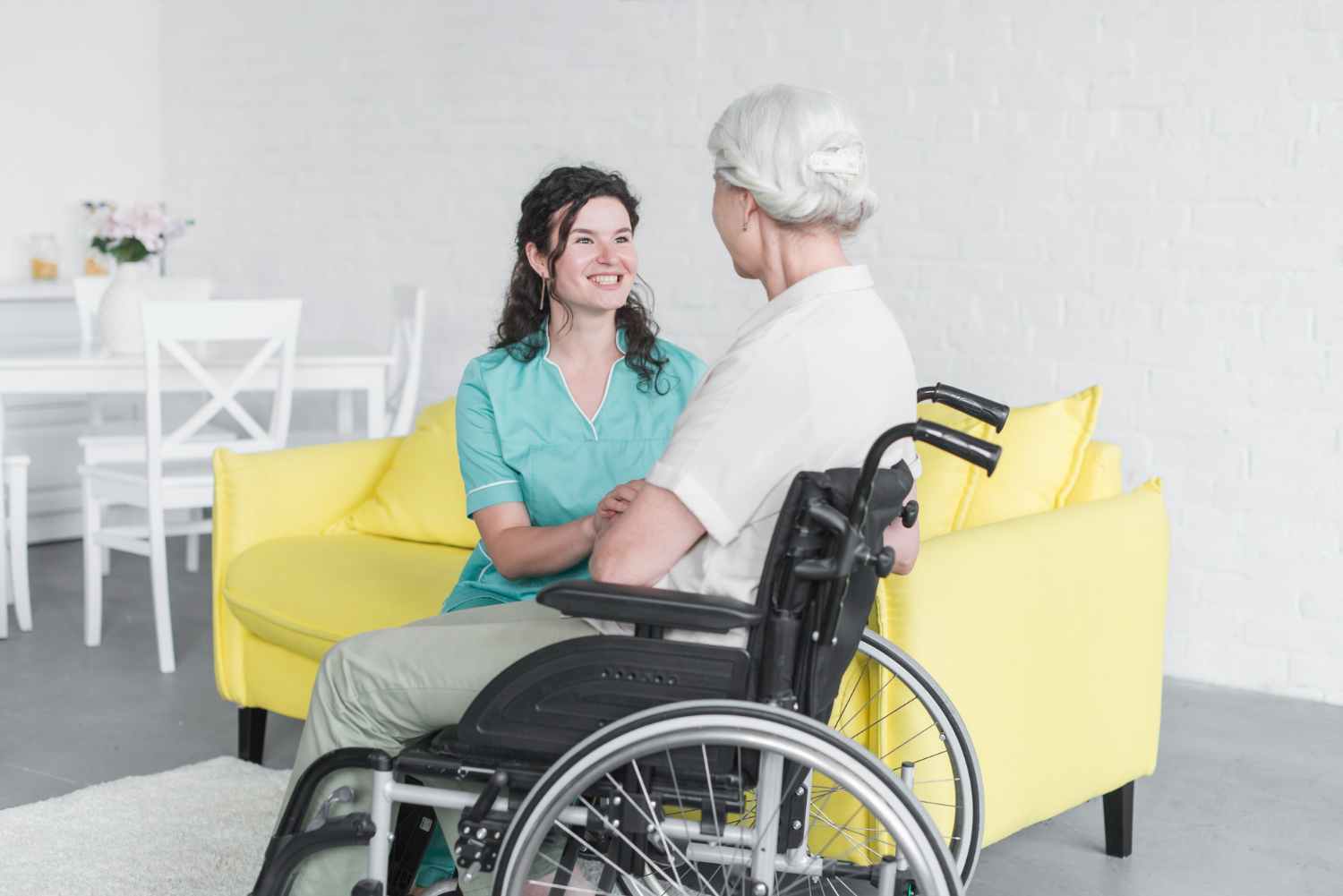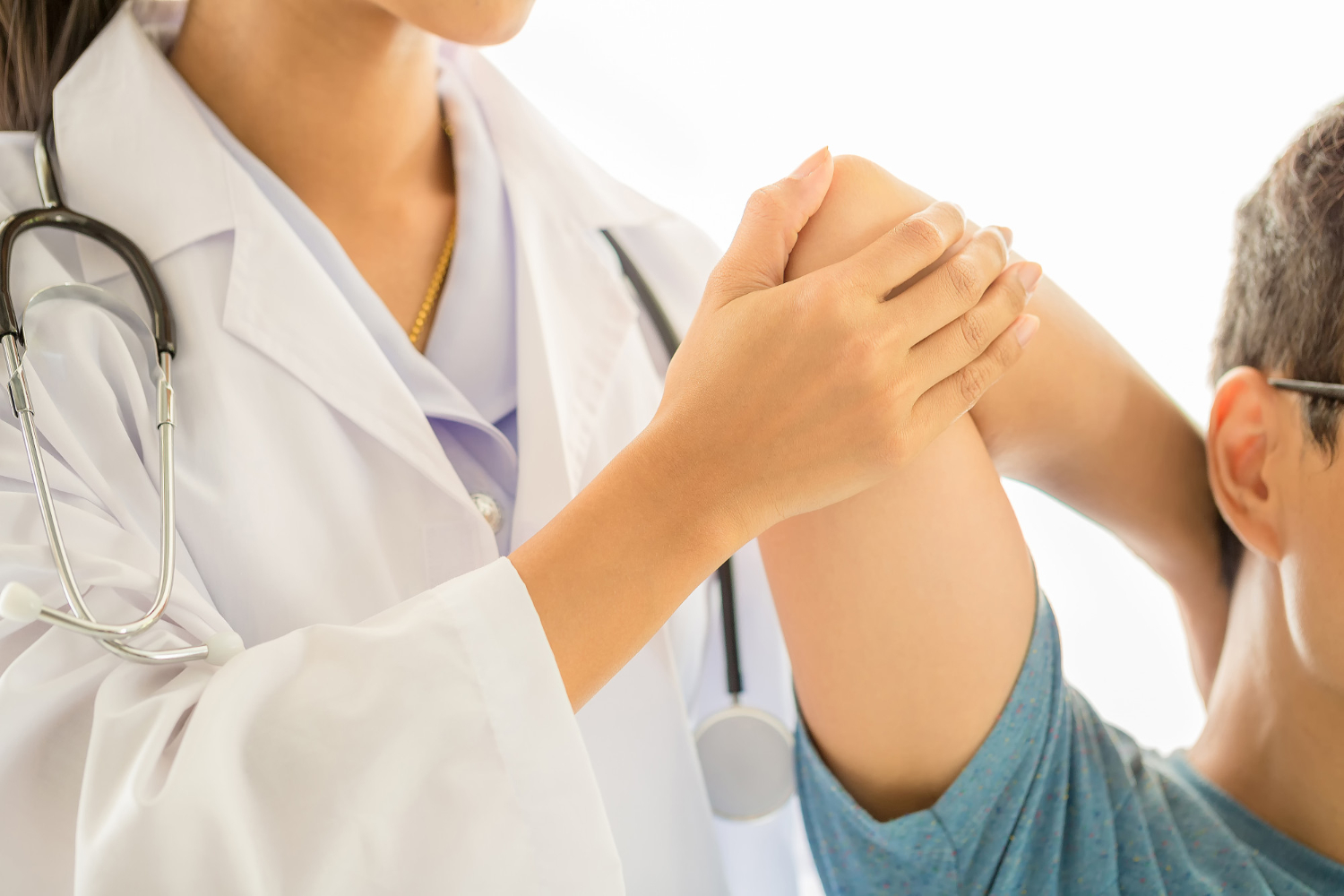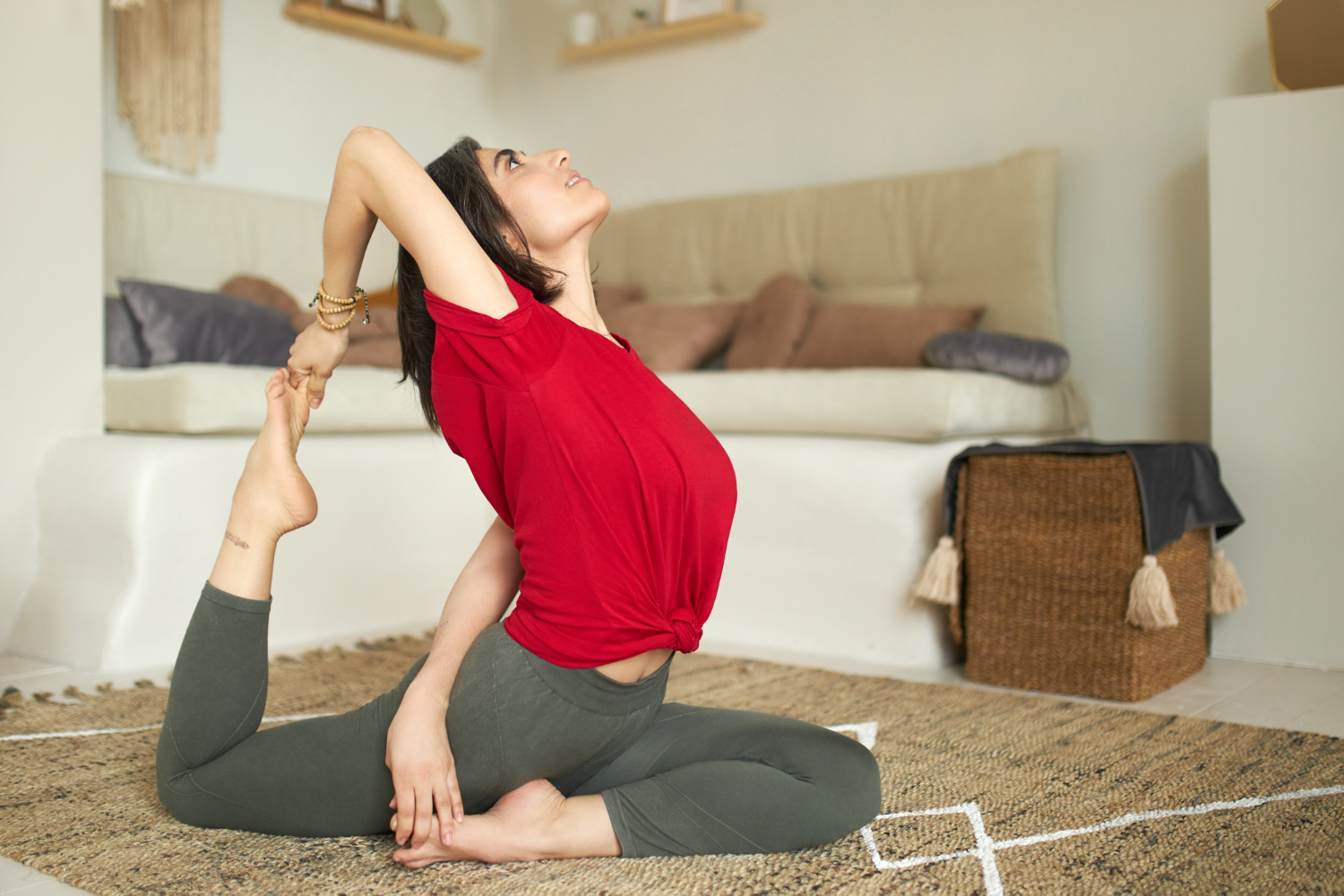Back Pain
Back pain
Back pain is a common reason for absence from work and for seeking medical treatment. It can be uncomfortable and debilitating. It can result from injury, activity and some medical conditions. Back pain can affect people of any age, for different reasons. As people get older, the chance of developingTrusted Source lower back pain increases, due to factors such as previous occupation and degenerative disk disease.
Lower Backpain
Lower back pain may be linked to the bony lumbar spine, discs between the vertebrae, ligaments around the spine and discs, spinal cord and nerves, lower back muscles, abdominal and pelvic internal organs, and the skin around the lumbar area.
Upper Backpain
Pain in the upper back may be due to disorders of the aorta, tumors in the chest, and spine inflammation.
A man with visible spine holds his back. Problems with the spine such as osteoporosis can lead to back pain.
The human back is composed of a complex structure of muscles, ligaments, tendons, disks, and bones, which work together to support the body and enable us to move around. The segments of the spine are cushioned with cartilage-like pads called disks. Problems with any of these components can lead to back pain. In some cases of back pain, its cause remains unclear. Damage can result from strain, medical conditions, and poor posture, among others. Back pain commonly stems from strain, tension, or injury.
Frequent causes of back pain
- Strained muscles or ligaments
- A muscle spasm
- Muscle tension
- Damaged disks
- Injuries, fractures, or falls
Activities that lead to strains or spasms
- Lifting something improperly
- Lifting something that is too heavy
- Making an abrupt and awkward movement
Structural problems
A number of structural problems may also result in back pain
Ruptured disks
Each vertebra in the spine is cushioned by disks. If the disk ruptures there will be more pressure on a nerve, resulting in back pain.
Sciatica
A sharp and shooting pain travels through the buttock and down the back of the leg, caused by a bulging or herniated disk pressing on a nerve.
Bulging disks
In much the same way as ruptured disks, a bulging disk can result in more pressure on a nerve.
Arthritis
Osteoarthritis can cause problems with the joints in the hips, lower back, and other places. In some cases, the space around the spinal cord narrows. This is known as spinal stenosis.
Abnormal curvature of the spine
If the spine curves in an unusual way, back pain can result. An example is scoliosis, in which the spine curves to the side.
Osteoporosis
Bones, including the vertebrae of the spine, become brittle and porous, making compression fractures more likely.
Kidney problems
Kidney stones or kidney infection can cause back pain.
Movement and posture
- Example of poor posture when using a computer.
- Adopting a very hunched sitting position when using computers can result in increased back and shoulder problems over time.
- Back pain can also result from some everyday activities or poor posture.
Examples
- Twisting
- Coughing or sneezing
- Muscle tension
- Over-stretching
Read More
- Bending awkwardly or for long periods
- Pushing, pulling, lifting, or carrying something
- Standing or sitting for long periods
- Straining the neck forward, such as when driving or using a computer
- Long driving sessions without a break, even when not hunched
- Sleeping on a mattress that does not support the body and keep the spine straight
Other Causes
Some medical conditions can lead to back pain
Cauda equina syndrome
The cauda equine is a bundle of spinal nerve roots that arise from the lower end of the spinal cord. Symptoms include a dull pain in the lower back and upper buttocks, as well as numbness in the buttocks, genitalia, and thighs. There are sometimes bowel and bladder function disturbances.
Cancer of the spine
A tumor on the spine may press against a nerve, resulting in back pain.
Infection of the spine
A fever and a tender, warm area on the back could be due to an infection of the spine.
Other infections
Pelvic inflammatory disease, bladder, or kidney infections may also lead to back pain.
Sleep disorders
Individuals with sleep disorders are more likely to experience back pain, compared with others.
Shingles
An infection that can affect the nerves may lead to back pain. This depends on which nerves are affected.
Symptoms of Back pain
The main symptom of back pain is an ache or pain anywhere in the back, and sometimes all the way down to the buttocks and legs. Some back issues can cause pain in other parts of the body, depending on the nerves affected.
The pain often goes away without treatment, but if it occurs with any of the following people should see their doctor:
- Weight loss
- Fever
- Inflammation or swelling on the back
- Persistent back pain, where lying down or resting does not help
- Pain down the legs
- Pain that reaches below the knees
- A recent injury, blow or trauma to the back
- Urinary incontinence
- Difficulty urinating
- Fecal incontinence, or loss of control over bowel movements
- Numbness around the genitals
- Numbness around the anus
- Numbness around the buttocks
When to see a doctor
You should seek medical help if you experience any numbness or tingling, or if you have back pain:
- That does not improve with rest
- After an injury or fall
- With numbness in the legs
- With weakness
- With fever
- With unexplained weight loss
Scan and Other Test
A doctor will usually be able to diagnose back pain after asking about symptoms and carrying out a physical examination. An imaging scan and other tests may be required if:
- Back pain appears to result from an injury
- There may be underlying cause that needs treatment
- The pain persists over a long period
An X-ray, MRI, or CT scan can give information about the state of the soft tissues in the back. X-rays can show the alignment of the bones and detect signs of arthritis or broken bones, but they may not reveal damage in the muscles, spinal cord, nerves, or disks. MRI or CT scans can reveal herniated disks or problems with tissue, tendons, nerves, ligaments, blood vessels, muscles, and bones. Bone scans can detect bone tumors or compression fractures caused by osteoporosis. A radioactive substance or tracer is injected into a vein. The tracer collects in the bones and helps the doctor detect bone problems with the aid of a special camera. Electromyography or EMG measures the electrical impulses produced by nerves in response to muscles. This can confirm nerve compression, which may occur with a herniated disk or spinal stenosis. The doctor may also order a blood test if infection is suspected.
Other types of diagnosis
An osteopath also diagnoses through palpation and visual inspection. Osteopathy involves slow and rhythmic stretching, known as mobilization, pressure or indirect techniques, and manipulation of joints and muscles.
Types of Back pain
If a person has both occasional bouts of more intense pain and fairly continuous mild back pain, it can be hard for a doctor to determine whether they have acute or chronic back pain. Back pain usually resolves with rest and home remedies, but sometimes medical treatment is necessary.
- Acute pain starts suddenly and lasts for up to 6 weeks.
- Chronic or long-term pain develops over a longer period, lasts for over 3 months, and causes ongoing problems.
Home treatments
Over-the-counter (OTC) pain relief medication, usually nonsteroidal anti-inflammatory drugs (NSAID), such as ibuprofen, can relieve discomfort. Applying a hot compress or an ice pack to the painful area may also reduce pain.
Resting from strenuous activity can help, but moving around will ease stiffness, reduce pain, and prevent muscles from weakening.
Medical treatment
If home treatments do not relieve back pain, a doctor may recommend the following medication, physical therapy, or both.
Medication: Back pain that does not respond well to OTC painkillers may require a prescription NSAID. Codeine or hydrocodone, which are narcotics, may be prescribed for short periods. These require close monitoring by the doctor. In some cases, muscle relaxants may be used. Antidepressants, such as amitriptyline Trusted Source, may be prescribed, but research is ongoing at to their effectiveness, and the evidence is conflicting.
Physical therapy: Applying heat, ice, ultrasound, and electrical stimulation — as well as some muscle-release techniques to the back muscles and soft tissues — may help alleviate pain. As the pain improves, the physical therapist may introduce some flexibility and strength exercises for the back and abdominal muscles. Techniques for improving posture may also help. The patient will be encouraged to practice the techniques regularly, even after the pain has gone, to prevent back pain recurrence.
To prevent back pain
Cortisone injections
If other options are not effective, these may be injected into the epidural space, around the spinal cord. Cortisone is an anti-inflammatory drug. It helps reduce inflammation around the nerve roots. Injections may also be used to numb areas thought to be causing the pain.
Traction
Pulleys and weights are used to stretch the back. This may result in a herniated disk moving back into position. It can also relieve pain, but only while traction is applied.
Cognitive behavioral therapy (CBT)
CBT can help manage chronic back pain by encouraging new ways of thinking. It may include relaxation techniques and ways of maintaining a positive attitude. Studies have found that patients with CBT tend to become more active and do exercise, resulting in a lower risk of back pain recurrence.
Arthritis
Osteoarthritis can cause problems with the joints in the hips, lower back, and other places. In some cases, the space around the spinal cord narrows. This is known as spinal stenosis.
Complementary therapies
An osteopath specializes in treating the skeleton and muscles. A chiropractor treats joint, muscle and bone problems. The main focus is the spine. Shiatsu, also known as finger pressure therapy, is a type of massage where pressure is applied along energy lines in the body. The shiatsu therapist applies pressure with the fingers, thumbs and elbows. Acupuncture originates from China. It consists of inserting fine needles and specific points in the body. Acupuncture can help the body release its natural painkillers — endorphins — as well as stimulating nerve and muscle tissue. Yoga involves specific poses, movements, and breathing exercises. Some may help strengthen the back muscles and improve posture. Care must be taken that exercises do not make back pain worse. Studies on complementary therapies have given mixed results. Some people have experienced significant benefit, while others have not. It is important, when considering alternative therapies, to use a well qualified and registered therapist.
Transcutaneous electrical nerve stimulation (TENS)
Transcutaneous electrical nerve stimulation (TENS) is a popular therapy for patients with chronic back pain. The TENS machine delivers small electric pulses into the body through electrodes that are placed on the skin. Experts believe TENS encourages the body to produce endorphins and may block pain signals returning to the brain. Studies on TENS have provided mixed results. Some revealed no benefits, while others indicated that it could be helpful for some people. TENS is considered “safe, noninvasive, inexpensive, and patient friendly,” and it appears to reduce pain, but more evidence is needed Trusted Source to confirm its effectiveness in improving activity levels. A TENS machine should be used under the direction of a doctor or health professional. It should not be used by someone who is:
- Pregnant
- Has a history of epilepsy
- Has a pacemaker
- Has a history of heart disease
Symptoms of Back pain
Surgery for back pain is very rare. If a patient has a herniated disk surgery may be an option, especially if there is persistent pain and nerve compression which can lead to muscle weakness. Examples of surgical procedures include:
Fusion
Two vertebrae are joined together, with a bone graft inserted between them. The vertebrae are splinted together with metal plates, screws or cages. There is a significantly greater risk for arthritis to subsequently develop in the adjoining vertebrae.
Artificial disk
An artificial disk is inserted; it replaces the cushion between two vertebrae.
Diskectomy
A portion of a disk may be removed if it is irritating or pressing against a nerve.
Partially removing a vertebra
A small section of a vertebra may be removed if it is pinching the spinal cord or nerves.
Injecting cells to regenerate spine discs
Scientists from Duke University, North Carolina, developed new biomaterials that can deliver a booster shot of reparative cells to the nucleus pulposus, effectively eliminating pain caused by degenerative disc disease.
Lower Risk factors
Steps to lower the risk of developing back pain consist mainly of addressing some of the risk factors.
Exercise
Regular exercise helps build strength and control body weight. Guided, low-impact aerobic activities can boost heart health without straining or jerking the back. Before starting any exercise program, talk to a health care professional.
There are two main types of exercise that people can do to reduce the risk of back pain:
- Core-strengthening exercises work the abdominal and back muscles, helping to strengthen muscles that protect the back.
- Flexibility training aims at improving core flexibility, including the spine, hips, and upper legs.
Diet
Make sure your diet includes enough calcium and vitamin D, as these are needed for bone health. A healthful diet also helps control body weight.
Smoking
A significantly higher percentage of smokers have back pain incidences compared to non-smokers of the same age, height, and weight.
Body weight
The weight people carry and where they carry it affects the risk of developing back pain. The difference in back pain risk between obese and normal-weight individuals is considerable. People who carry their weight in the abdominal area versus the buttocks and hip area are also at greater risk.
Posture when sitting and standing
A good seat for working should have good back support, arm rests and a swivel base. When sitting, try to keep your knees and hips level and keep your feet flat on the floor, or use a footstool. You should ideally be able to sit upright with support in the small of your back. If you are using a keyboard, make sure your elbows are at right-angles and that your forearms are horizontal.
Standing
Make sure you have a neutral pelvic position. Stand upright, head facing forward, back straight, and balance your weight evenly on both feet. Keep your legs straight and your head in line with your spine.
Bed
You should have a mattress that keeps your spine straight, while at the same time supporting the weight of your shoulders and buttocks. Use a pillow, but not one that forces your neck into a steep angle.
Lifting
When lifting things, use your legs to do the lifting, rather than your back.
Keep your back as straight as you can, keeping your feet apart with one leg slightly forward so you can maintain balance. Bend only at the knees, hold the weight close to your body, and straighten the legs while changing the position of your back as little as possible.
Bending your back initially is unavoidable, but when you bend your back try not to stoop, and be sure to tighten your stomach muscles so that your pelvis is pulled in. Most important, do not straighten your legs before lifting, or you will be using your back for most of the work.
Do not lift and twist at the same time
If something is particularly heavy, see if you can lift it with someone else. While you are lifting keep looking straight ahead, not up or down, so that the back of your neck is like a continuous straight line from your spine.
Moving things
It is better for your back to push things across the floor, using your leg strength, rather than pulling them.
Shoes
Flat shoes place less of a strain on the back.
Driving
It is important to have proper support for your back. Make sure the wing mirrors are properly positioned so you do not need to twist. The pedals should be squarely in front of your feet. If you are on a long journey, have plenty of breaks. Get out of the car and walk around.





